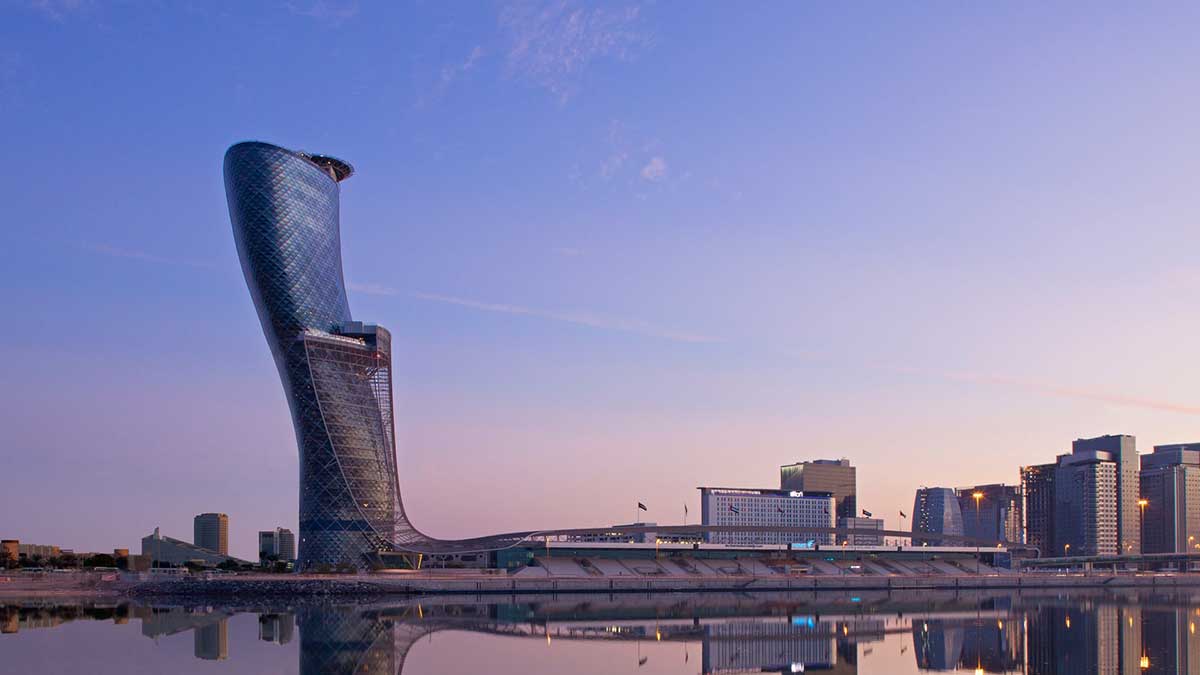
Contemporary Architecture design image source from mace.world.
Contemporary styles began to develop around the early 1920s which were driven by a collection of architectural Bauhaus School of Design in Germany. They respond to technological advances and social changes in society due to world war. Contemporary styles in building art themselves began to develop rapidly in the 1940-1980s.
The term contemporary architecture refers to the current style of buildings. In the field of architecture, contemporary and modern do not have the same meaning. Modern refers to modernist architecture that existed in the early to mid-twentieth century. Contemporary is basically a design style that is up to date or is being produced in the present. Contemporary is dynamic and not bound by an era. Instead, modern basically signifies an era after the traditional or pre-industrial era. Contemporary designs display newer styles.
Old style that is labeled contemporary will produce a design that is fresher and different. Contemporary also offers a combination of styles, such as modern contemporary, contemporary classic, contemporary rustic, and others.
Contemporary architecture is not an architectural movement, like Baroque, Futurism, or Modernism, which is always associated with certain historical periods. This means that contemporary architecture can offer a variety of architectural choices, which stand alone and do not follow what is usually done. However, the large variety created by contemporary architecture does not erase the general features of contemporary architecture. Below are some of the things that shaped contemporary architecture.
Form
We can see and observe that the dominant element in the architecture is a straight line. Contemporary architecture tends to stay away from this habit by using curved lines more often. In some instances, a building is entirely designed with curved lines. In another example, some are designed by combining curved lines and straight lines.
Space Composition
The use of curved lines also allows the creation of other forms of space besides the cube. In contemporary architecture, people see buildings in a round shape. When contemporary architecture uses straight lines, more unique spatial compositions will be created. This space composition allows the creation of a more vibrant interior space with unusual layouts. If you like something unusual, contemporary architecture is the right choice for you.
New Material
Another feature of contemporary architecture is the use of new materials in the interior and exterior. Traditional materials such as glass, wood, brick and metal are preferred. Plants are also often used in contemporary architecture, especially on the roof or on walls.
Window
Larger and larger windows are also a feature of contemporary architecture. Windows are usually placed in a unique position. If you like natural light and love scenery, contemporary architecture can be an option. However, if you are very concerned about privacy and plan to build a house in an urban area where there are neighbors nearby, it should be noted about window placement.
Environment Oriented
Eco-housing is a characteristic that is often used in contemporary architecture. Many conventional buildings use elements that are environmentally friendly and energy efficient. In residential construction, contemporary architecture has the purpose of integrating homes with the surrounding nature. The goal is not only to protect the environment from interference, but also to add special character to the house.
Animated Architecture
As a result of the absence of a better term, animated architecture is the name given to other characteristics of contemporary architecture. These characteristics include the exterior lighting of sophisticated buildings, projection facades that are able to interact with passers-by or users of buildings, and water, such as fountains or colored waterfalls. The idea is to make the building feel more alive and make the outside have an animated element.
Contemporary Building Examples
The following are some examples of institutional and commercial buildings. These buildings are built on a large budget, aiming to create new architectural ideas and show the distinctive features of contemporary architecture.
The Capital Gate Tower
This building is located in Abu Dhabi, United Arab Emirates. This circular shaped building has 34 floors with a slope of 18 degrees in the middle. This slope makes the Capital Gate Tower the leanest building in the world. The interior layout also gives a different impression in each room and there are no identical rooms with each other. This building was designed by Scottish architectural firm RMJM.
The Auditorio de Tenerife
The auditorium has a round shape and a hanging arched canopy. The canopy above it also has a round shape and looks like it is against gravity. The auditorium is located in Santa Cruz de Tenerife, Spain. This building was designed by Spanish architect Santiago Calatrava.
Sydney Opera House
This building that has a function as an opera house has a shape that reminds us of the screen of a ship or giant clamshell. Although this building was made in 1973, the structure of this building remains a reference to contemporary architecture. This building was designed by a Danish architect named Jorn Utzon.





